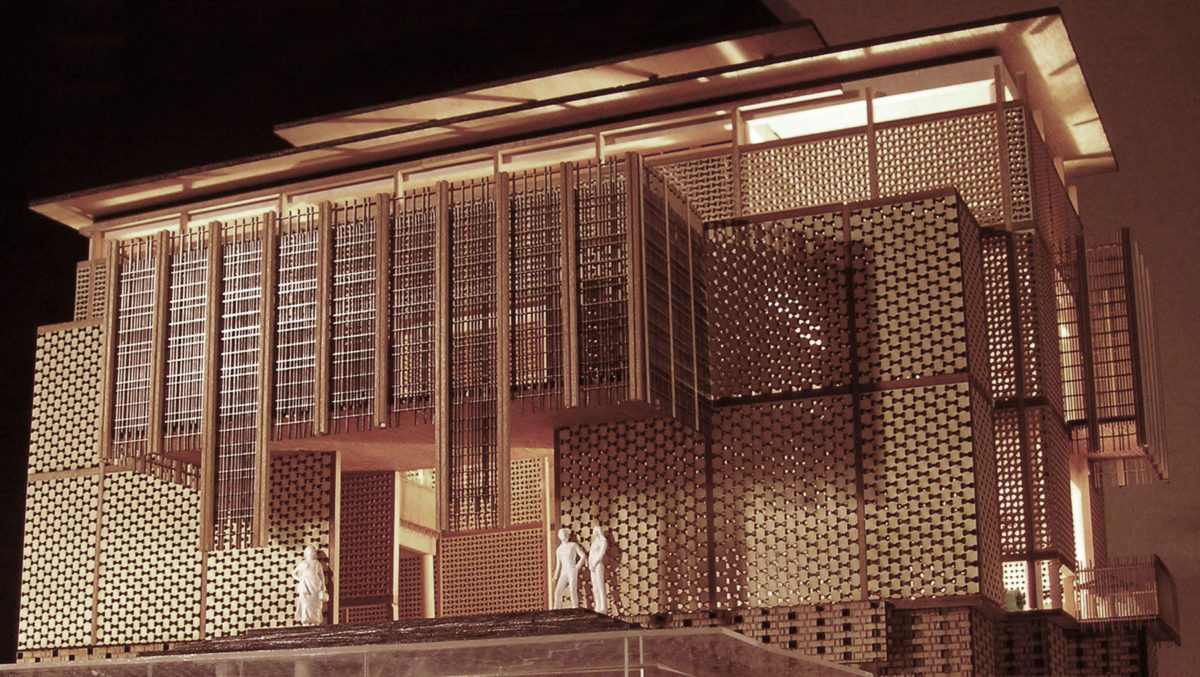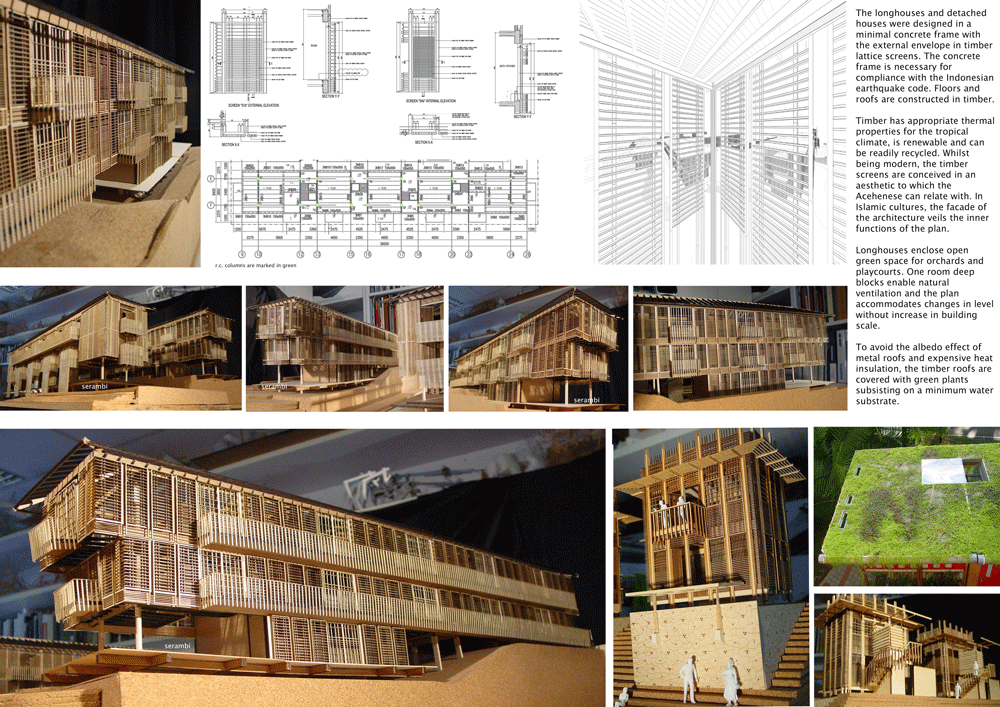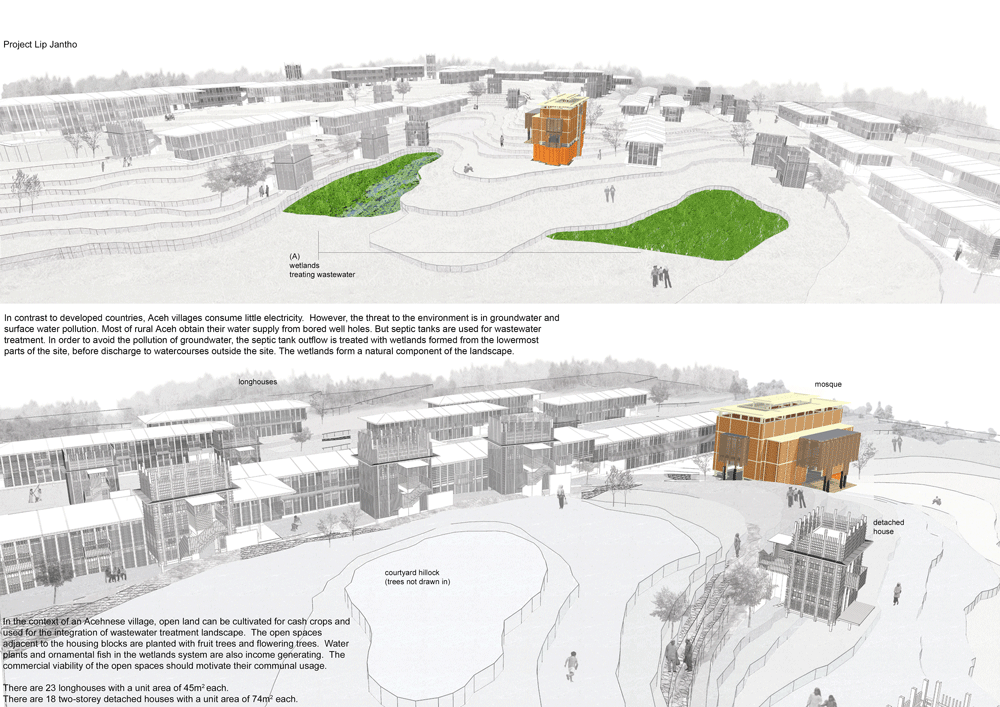A 9.3 scale undersea earthquake in the Indian Ocean was caused by the subduction of the Indian Plate by the Burma Plate on 26 Dec 2004. Amongst 14 other countries, Aceh and Meulaboh in North Sumatra experienced a death toll of 280,000 in 10m high sea waves from the resulting tsunami. Singapore-based Mercy Relief team (funded by Red Cross) with the support of both Singapore Armed Forces and the Indonesian Army were active in disaster relief over the next few months. Dr Joseph Lim was appointed architect by Mercy Relief for the post-tsunami housing rebuilding efforts and his self-sufficient housing proposal won an Honorable Mention at the Institute for Advanced Architecture of Catalonia Award in 2005. [Published in Self-Suffcient Housing, ACTAR, Loft Publications, 2006]
The rebuilding of disaster torn communities when poorly considered may result in the perpetuation of existing problems created by mistakes in planning. The provision of shelter is not enough when it is considered as a stand-alone solution for the proud Acehnese people who are accustomed to ways of life closely related to the land and the sea. Rebuilding must be considered in terms of continued relationships between livelihoods, environment and infrastructure in ways which preserve tradition and culture without hindering progress or further damaging the environment.
It is in this context that the design for a 1000 inhabitant in a 5 hectare plot of land in inland Aceh Besar proposes a physical plan to sustain the economic recovery of the people whilst creating spaces for community living and dealing with waste management creatively. The cultivation of cash crops in open spaces integrated with an odourless waste water treatment process forms the basis of the village landscape, a working landscape (as opposed to an ornamental landscape) which will be sustained for economic benefit whilst providing an aesthetic setting for the serambis – sheltered verandah decks – for outdoor communal activities. Longhouse blocks familiar to the indigenous people are re-interpreted in new space standards set by the Indonesian authorities and which provide sufficient floor area to accommodate the population density within 2-3 storey heights framing the open areas large enough for the wastewater treatment processes, and which are also generated in relation to the topography of the working landscapes.
Acknowledgements:
Mercy Relief Singapore, Prof Ng Wun Jern, Brendon McNiven,
Juliana Juwahir, Leon Leong, CI Yeo Consulting Engineers and DLS



